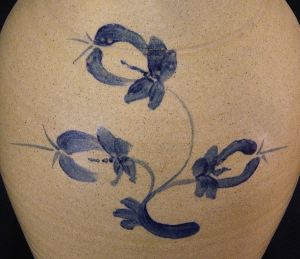Full disclosure: Because the Thomas Crafts homestead is only 20 minutes from my house, he’s sort of a ‘home-town favorite.’ 
When you hold a Thomas Crafts teapot in your hands, you are in the presence of a master.
He operated an earthenware “Teapot Manufactory” in Whately MA from 1806 until switching to stoneware crocks in 1833. His teapots were paper thin and perfectly thrown. The spouts were formed, as was customary, with highly valued, personalized molds. His mirror black “Jackfield” type glaze required an additional firing, unusual for redware of the time.
The Crafts ascribed teapot shown here sits at the pinnacle of pre-industrial American artisan pottery. That alone is enough to merit inclusion in any list of pottery greats. But modern students of pottery can draw several lessons here.
This teapot offers a window into the world Thomas Crafts inhabited. Records show that, along with an assistant (usually his own kin), he could turn out 2,067 dozen teapots a year. That’s roughly 88 teapots a day, 5 days a week, 56 weeks a year! And Crafts was just one of countless American potters making teapots. Furthermore, they were all competing against a Staffordshire behemoth factory system that flooded America with its own “Brown Betty” teapots. This was a time and place that worshiped tea.
Thomas Crafts employed what we now call a “production potter” mentality. It would be easy to equate this mentality to that of an automaton, given the quantity of teapots his “Manufactory” created. But one would be mistaken to view the sparse character of this teapot as simply “form following function.” Instead, like so much American redware, it offers a unique and focused study of form and volume. It’s worth noting that the vast majority of historical masterpieces were produced using similar production mentalities.
To quote an old ‘Letter to the Editor’ in Ceramics Monthly on this same topic, “…which of these two qualities seems more synonymous with great pots; a never-ending quest to make something different that looks kinda neat, or consummate skill? Skill takes practice, grunt work, and yes, repetition. Don’t be afraid of it. It will take you places you never dreamed of.”


